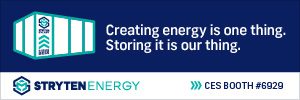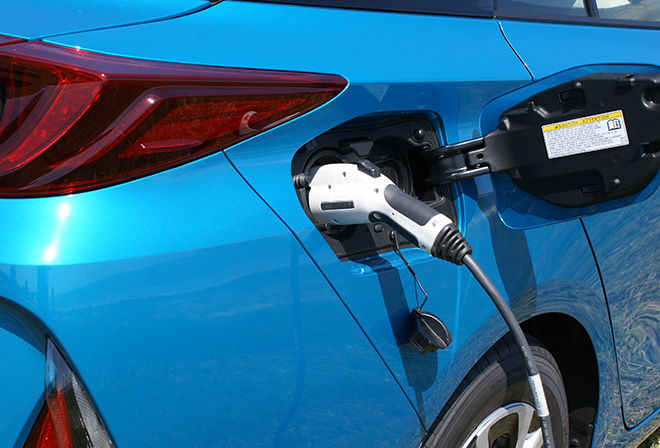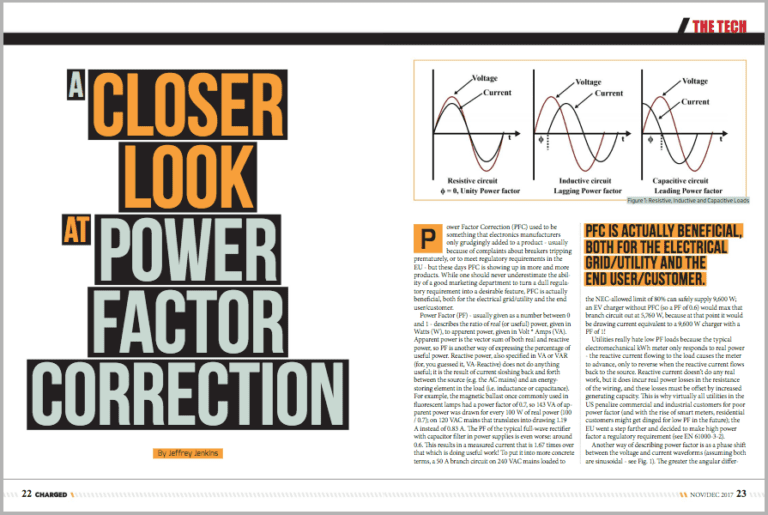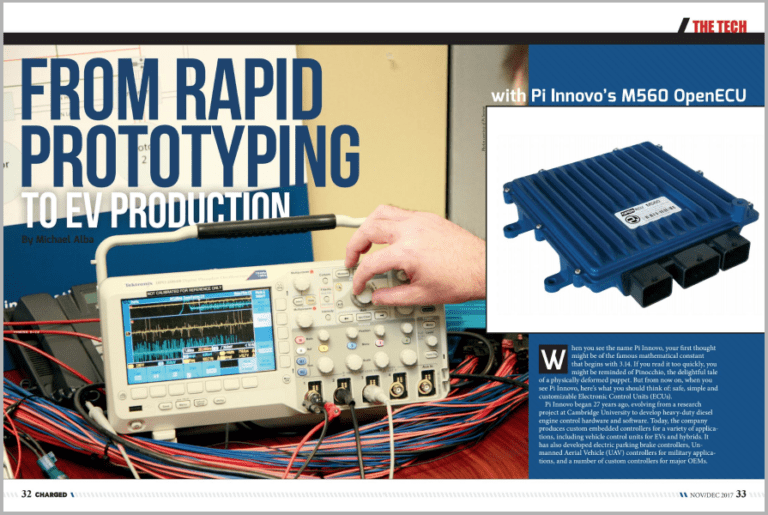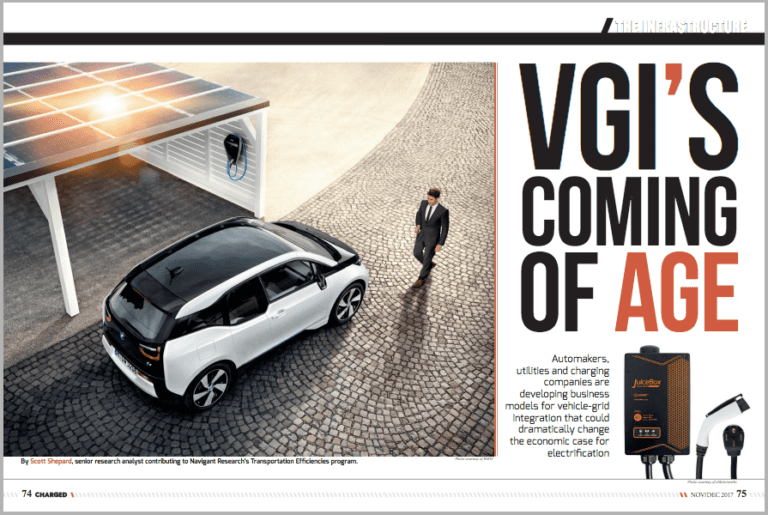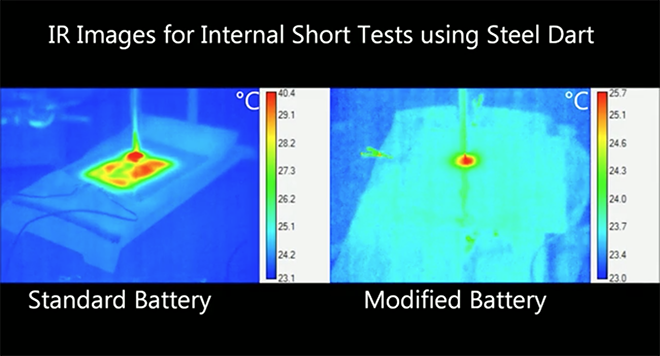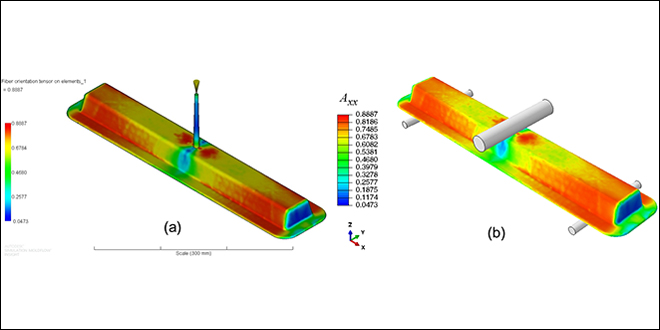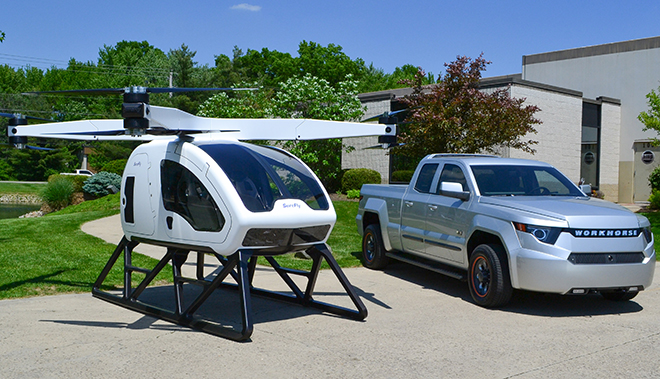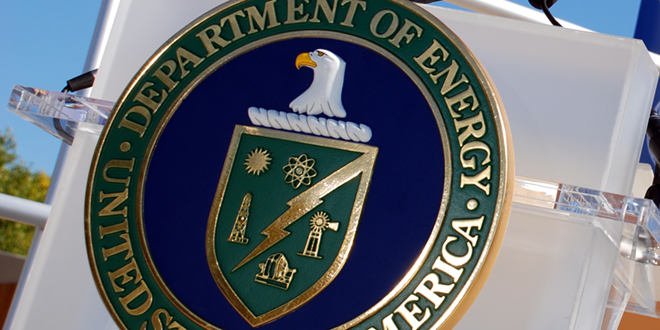[Editor’s note: We reported that this was a new survey, but later realized, on more closely reading the original source, that the survey was published in January 2017. This was a journalistic error on our part, and we apologize.] Really? With everything that’s going on in the EV space these days, most executives at major… Read more »
Search Results Found For: "DOE "
A redesigned Nissan LEAF arrives in 2018, joining the new generation of plug-ins
When some future author writes a book about the most influential cars in automotive history, the Nissan LEAF will be right up there with the Model T, the VW Beetle and the Tesla Model S. The LEAF was the first EV aimed at the mass market, and as of this writing, it remains the best-selling… Read more »
A closer look at power factor correction
Power Factor Correction (PFC) used to be something that electronics manufacturers only grudgingly added to a product – usually because of complaints about breakers tripping prematurely, or to meet regulatory requirements in the EU – but these days PFC is showing up in more and more products. While one should never underestimate the ability of… Read more »
From rapid prototyping to EV production with Pi Innovo’s M560 OpenECU
When you see the name Pi Innovo, your first thought might be of the famous mathematical constant that begins with 3.14. If you read it too quickly, you might be reminded of Pinocchio, the delightful tale of a physically deformed puppet. But from now on, when you see Pi Innovo, here’s what you should think… Read more »
VGI’s coming of age: Automakers, utilities and charging companies are developing business models for vehicle-grid integration
By Scott Shepard, Senior Research Analyst with Navigant Research’s Transportation Efficiencies program Vehicle-grid integration (VGI) is a topic that tends to be at the fringes of coverage of transportation electrification. Developments in the VGI field are often overshadowed by Tesla Model 3 delivery timelines or by the range specs of the next-generation Nissan LEAF. Regardless,… Read more »
Questions and concerns: Battery power in marine applications
Experts discuss the special concerns when designing battery technology for marine environments. There is growing worldwide demand for electric-powered vessels and for broader electrification in maritime operations, particularly in ports. Consider the Ports of Los Angeles and Long Beach, for example. Air pollution from those ports is a top concern for environmental and public health… Read more »
Lithium-ion battery inspired by safety glass could reduce fire risk
Researchers at the Oak Ridge National Laboratory (ORNL) have developed a way to mitigate the risk of battery failure during automobile accidents by including slits along the electrodes. In “Limiting Internal Short-Circuit Damage by Electrode Partition for Impact-Tolerant Li-Ion Batteries,” published in the journal Joule, the research team explains how this technology could allow manufacturers… Read more »
Predicting the properties of lightweight carbon fiber composites
Carbon fiber-reinforced plastics represent a promising lightweight replacement for heavy steel. However, for carbon fiber to be widely adopted, new, more economical composites need to be developed. Unfortunately, carbon fiber properties are difficult to model, as they depend on complex features such as fiber loading, length distribution and orientation. Now researchers at the DOE’s Pacific… Read more »
Workhorse to spin off SureFly personal helicopter business
Workhorse Group (NASDAQ:WKHS) has several electric irons in the fire, so to speak. It says it has pre-orders for over 5,000 units of its W-15 plug-in pickup truck (profiled in the May/June 2017 issue of Charged); it has an electric truck on the short list to be selected as the next delivery vehicle for the… Read more »
ARPA-E issues $100-million funding opportunity for early-stage energy R&D
The DOE has announced up to $100 million in funding for new projects as part of ARPA‑E’s latest OPEN funding opportunity (DE-FOA-0001858). Areas of research covered by this FOA include all aspects of transportation, including electrification and energy efficiency. Under the Transportation Technical Category, subcategories include: electric motors; fuel cells; alternative vehicle designs such as… Read more »



